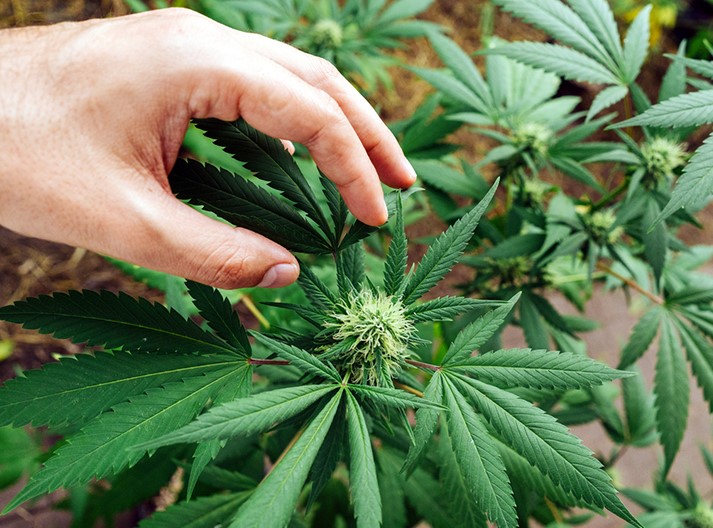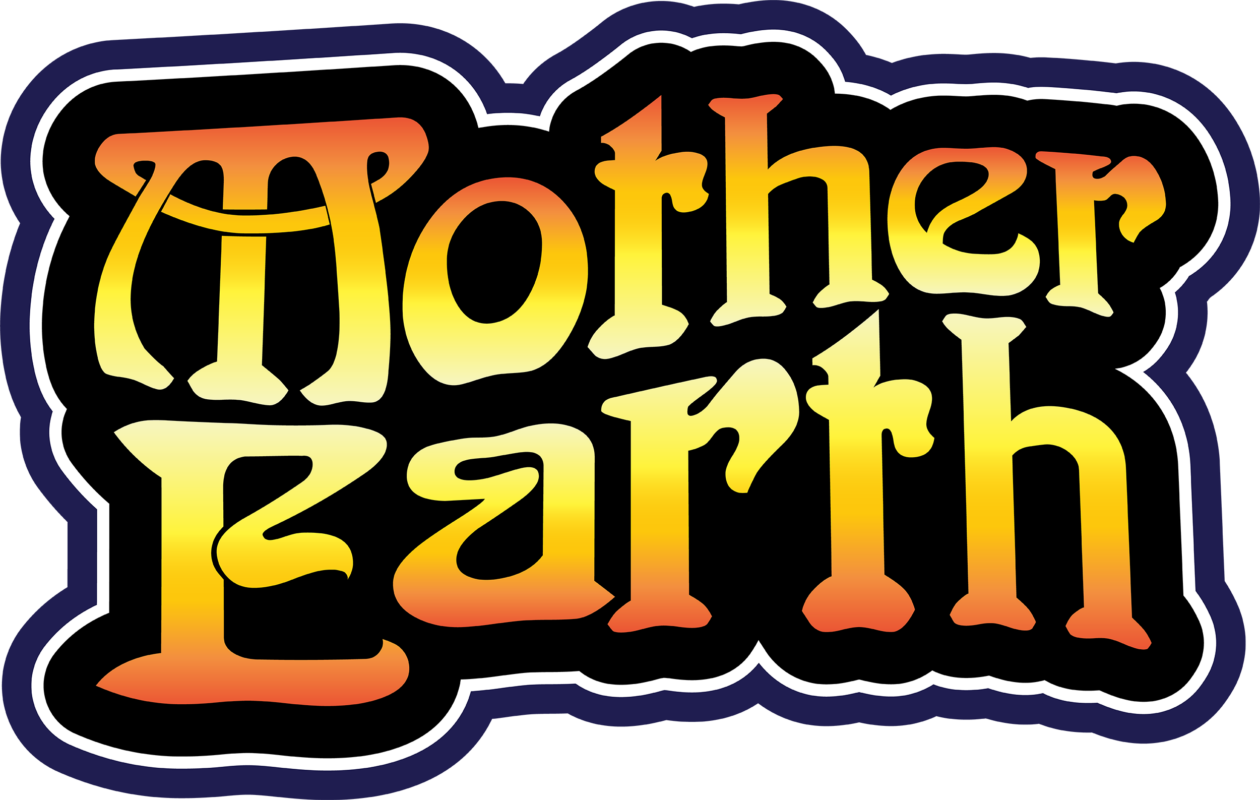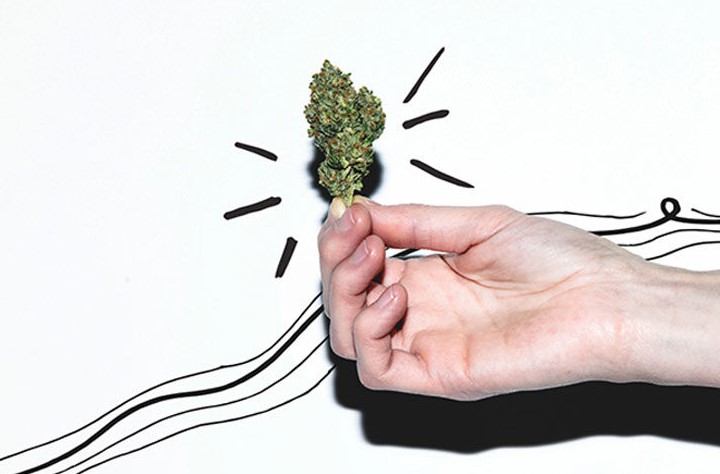Uncategorized
Cannabis And Anxiety
Cannabis should be one of the first options chosen whencustomizing an anxiety plan, as it has been shown to be effective in reducing symptoms.
Anxiety disorders are the most commonly diagnosed mental illnesses in America, with 40 million adults suffering every year. Although anxiety is highly treatable, less than 37% of people receive treatment annually.1 Reasons for this discrepancy may be due to undiagnosed cases, lack of available resources, or a unwillingness to seek help from conventional sources.
There is a growing body of evidence suggesting that cannabis may be effective in treating anxiety disorders, which has piqued the interest of researchers, health care professionals, and patients alike. As more states legalize cannabis for medical purposes and other states revisit their medical use policies, anxiety is increasingly becoming one of the approved conditions. Much of this progress can be accredited to researchers studying the endocannabinoid system (ECS) and its impact on maintaining equilibrium. Even though there aren’t defined recommendations for dosages or timeframes, clinicians are having success using cannabis as both a primary therapy and part of broader anxiety management plans.
What Іs Anxiety
Anxiety is a psychological and physical reaction to real or imagined danger. It ranges from feelings of unease to panic, as well as physical responses from increased heart rate to fleeing from a threat. Anxiety becomes problematic when the emotional response persists for too long, is overly frequent, or is intense compared to the trigger and interferes with daily living. Though the ICD-10 definition for generalized anxiety disorder (GAD) starts out by stating “a condition marked by excessive worry and feelings of fear, dread, and uneasiness that last six months or longer,” talking to anyone who has dealt with anxiety will tell you it’s not that cut-and-dry. Anxiety symptoms can differ from one person to the next, and they might be occasional or continuous. If untreated, anxiety can influence every aspect of life with physical effects like stomachaches and migraines, as well as emotional ones such as not wanting to leave the house or avoiding social situations.
Anxiety Symptoms
Anxiety disorders come in a few different types: GAD, panic disorder, social anxiety disorder (SAD), specific phobias, obsessive-compulsive disorder, posttraumatic stress disorder (PTSD), major depressive disorder, and persistent depressive Disorder. They all have similar physical and mental symptoms to some degree– involving every system of the body– though the intensity level and duration differ between them.
Nervous System: When the brain perceives a threat, it releases adrenaline, cortisol, and other neurotransmitters to help the body respond. Constant exposure to these chemicals can cause a sense of unease or doom, difficulty concentrating, and panic attacks. Long-term exposure to these hormones and neurotransmitters due to anxious feelings is linked to other physical health problems such as weight gain, depression
Respiratory System: When you have a panic attack, anxiety-induced hormones can cause your breathing to quicken and become shallower.
Circulatory System: Many people associate heart palpitations with panic attacks, but they can also happen during periods of general anxiety. They may feel like a vibration in the chest. When anxiety increases, so does blood pressure. If left untreated, this could lead to hypertension.
Immune System: The constant release of stress hormones can weaken the immune system, which makes it more likely for you to get sick.
Gastrointestinal System: The gut-brain connection is very important in anxiety disorders, as stomach pains, nausea, and diarrhea are often the first signs of long-term generalized anxiety. While it was previously thought that irritable bowel syndrome (IBS) was only a symptom of anxiety, experts now agree that IBS has its own pathophysiology; however, people with IBS frequently suffer from anxiety, which worsens gut symptoms.
Musculoskeletal System: Anxiety might be the root cause of Aches and pains in muscles and joints that can’t be explained away.

Treatment Options for Anxiety
Anxiety can cause big problems in day-to-day life by making it hard to focus, do well at work or school, get things done around the house, and relate to other people. For some people, anxiety might make them too scared to leave home or even get out of bed. If not treated, anxiety has also been connected with more serious conditions like depression and suicide and may show up as physical illness.
There is no one-size-fits all when it comes to treating anxiety disorders. Each case must be unique in its approach, depending on the symptoms and severity. The most commonly chosen and effective methods are medication (as will be discussed further), therapy, complementary alternative medicine, and transcranial magnetic stimulation (TMS). Although therapy is anxiety disorders’ most successful treatment, doctors will frequently prescribe antidepressants or antianxiety medications to go with it. When choosing a plan, all available types of treatments should be considered, including cannabis.
Therapy
The most successful form of therapy for anxiety is cognitive behavioral therapy. This type of therapy focuses on a patient’s thinking and behavior patterns in order to change them. In other words, the patients learn coping mechanisms during their sessions that they can use outside of traditional talk-therapy. Technology has now allowed people to have these same types of appointments through cell phones, computer screens, or even text messaging services.
Complementary & Alternative Medicine
Complementary and alternative medicine (CAM) approaches, such as meditation, yoga, and acupuncture, are becoming increasingly popular due to the growing body of scientific evidence backing their efficacy in treating anxiety symptoms.
TMS
TMS, which is also called repetitive TMS or rTMS, uses a magnetic field to create small electrical current in a specific region of the brain. This non-invasive treatment is safe and effective for people who have tried other methods like medication without success. The electric current comes from an electromagnetic coil that sends pulses through the scalp; this process if FDA approved.
Medication for the Treatment of Anxiety
Many people suffer from anxiety disorders, but fortunately, there are safe and reliable medications that can help. Medications for anxiety disorders come in many form options (pills, liquids)and can be used short or long term to supplement other forms of treatment like therapy. However, it’s important to remember that not all patients will respond the same way to medication and some trial-and-error is often necessary to find the drug that works best for them. Additionally, according to data from the 2009–2010 Medical Expenditure Panel Survey , mental health drugs are among some of the most commonly prescribed medications in America– with 1 in 6 Americans taking an antidepressant or sedative at any given time.
In order to grasp how cannabis may affect the anxiety response, it is helpful to understand the mechanism of action of these medications. There are four major classes of medications used to treat anxiety disorders.
The selective serotonin reuptake inhibitors (citalopram, escitalopram, fluoxetine, paroxetine, and sertraline) work by blocking the reabsorption of serotonin in certain nerve cells of the brain. Serotonin-norepinephrine reuptake inhibitors (SNRIs), such as venlafaxine and duloxetINE increase levels of both neurotransmitters mentioned while also inhibiting their ability to be taken up by other cells in the brain. Benzodiazepines are used to manage anxiety in the short-term or as a supplemental strategy for treatment-resistant disorders. They function by augmenting gamma-aminobutyric acid, bringing about sedative, hypnotic, and anxiolytic effects. Tricyclic antidepressants—one of the earliest classes of antidepressant medications— elevate levels of norepinephrine and serotonin while inhibiting acetylcholine.
Although people once thought that only pharmaceuticals could change the way neurotransmitters and stress hormones work, recent years have disproven that notion. Studies about exercise and meditation have shown to be helpful in reducing stress responses or feelings brought on by too much stimulation. Even more importantly, researchers finding out more about the endocannabinoid system has opened up new ways for the brain to control everything going on in the body
The ECS and Anxiety
The ECS (endocannabinoid system) was discovered in 1992 at the Hebrew University of Jerusalem. It’s a signaling system made up of cannabinoid receptors CB1 and CB2; their ligands, endocannabinoids anandamide (N-arachidonoylethanolamide, or AEA) and 2-AG (2-arachidonoylglycerol); transport proteins; and degradative enzymes. The ECS performs multiple tasks that always aim to maintain a stable environment despite fluctuations in the external environment. The Endocannabinoid System (ECS) is responsible for energy expenditure, food intake, pain perception, inflammation, cognition, and stress responses such as anxiety according to recent research. This same research suggests that because the ECS is expressed so highly in brain areas involving mood regulation and cognitive function (areas like the amygdala, prefrontal cortex,, hippocampus), it play a role in emotional processing and therefore anxeity disorders may be linked back to dysregulation of the ECS.
CB1 receptor agonists and inhibitors of AEA hydrolysis have both been shown to increase the firing activity of specific serotonin-producing neurons. This, in turn, produces an anxiolytic (anti-anxiety) effect. Similarly, stimulation of the CB1 receptor has also been shown to increase noradrenergic neuron firing activity and norepinephrine release in the prefrontal cortex.9,10 In other words, phytocannabinoids can influence regulation of the ECS to control anxiety, just as some pharmaceuticals do.
CBD has been shown to decrease the activity of the enzyme that breaks down AEA, which results in more AEA present and enhanced serotonin activity; this produces anxiolyticlike effects. Meanwhile, THC has been shown to directly affect CB1 receptors, stimulating the release of norepinephrine. In combination, CBD and THC act similarly to an SNRI used treatments for anxiety and depression.
However, cannabis has been shown to have dual effects on anxiety in animal studies and with humans. In general, low doses of cannabinoids tend to produce anxiety-reducing (anxiolytic) effects while higher doses result in an increase in anxiety levels (anxiogenic).

The Biphasic Nature of Cannabis in the Treatment of Anxiety
People report that the No. 1 reason they try medical cannabis is to relax; however, anxiety is also a common adverse effect of using cannabis in medicinal contexts. Many people say that after consuming high doses of THC, they experience panic attacks or paranoia. The ECS helps balances a person’s reaction to stimuli, which may explain why low doses of cannabis have an anxiolytic-like effect while high does cause the opposite response.
A fair deal of the research done on cannabinoids and their role in anxiety treatment has mostly been carried out using synthetic cannabinoids like nabilone. Nabilone is a single molecule, artificial THC analog as well as being a CB1 agonist, and studies shows that it works against anxiety. There is evidence to support that the CB1 receptor plays a role in anxiety, and its activation appears to be linked with lower symptoms of anxiety. Studies done on GAD suggest that CBD has both qualities of an anxiolytic and antipsychotic16 . High doses of CBD were not successful in reducing anxiety symptoms animal models of GAD showed, but low doses (10 mg/kg) had evident anxiolytic-like effects. Although many observational studies show that cannabis has a twofold effect in treating anxiety, researchers agree that more investigation is needed to understand the mechanisms of action. The mechanism may be very intricate.
CBD Oil for Anxiety
Recently, CBD oil has garnered a lot of attention as the non-intoxicating cannabinoid that could theoretically alleviate various symptoms and issues. Of those, anxiety is number one. In a survey of 2,000 American adults, relaxation, anxiety relief, and improved sleep were the top three reasons given for trying out CBD oil. A small 2011 study found that people with SAD (Social Anxiety Disorder) experienced symptom reduction after taking CBD oil. Brain scans of participants in this study revealed changes in blood flow to the regions of the brain linked to feelings of anxiety. These changes were a direct result of CBD oil, which not only made participants feel better but also changed their brains’ response to anxiety altogether. A 2015 review of Neurotherapeutics concluded that CBD oil may be promising for treating anxiety disorders, like GAD. The same study noted though that there is a lack of research on the effects of chronic CBD use, so more investigations need to happen before doctors can make any official recommendations.
Practice Points for Clinicians
Although more research is needed to make population-wide recommendations for the CBD:THC ratio, dose, and timing for treating anxiety disorders, an increasing number of studies are supporting cannabis use as a first-line or adjunctive therapy. As with other conditions, the goal of anxiety therapy should be reducing symptoms as much as possible while minimizing any intoxicating effects–meaning that personalization is key.
When considering anxiety treatments, you have three product choices: high CBD, 1:1 CBD:THC, and CBD only. However, cannabinoid analysis is not required in most legal cannabis states, so it can be tough to find these ratios in flower or whole plant products. That’s why clinicians recommend tinctures and vape concentrates for treating anxiety; these items usually come with clear labeling that details the percentage of the product that is made up of CBD, THC, and other cannabinoids. Edibles are not recommended because the liver changes the active metabolites in the body, making it difficult to determine an effective dose. Other concentrates, such as dabs, wax, and shatter, also deliver too much THC for anxiety treatment.
A good rule of thumb for clinicians is to start anxiety patients off on low doses with 2 to 20 mg of cannabinoids in one dose. This should be taken before bed, and the patient can increase from there. For those who are worried about the THC’s intoxicating effects, it would be best if they started with CBD only. As is always important when giving cannabis recommendations, tell patients with anxiety disorders to keep a close journal detailing their dosage, timing, symptom relief, and any adverse effects they experience. After taking CBD, it’s important to note any changes in anxiety levels in order to determine the optimal dose. Once an effective night-time dose has been established – considered the “sweet spot” – that same amount can be taken during the day to relieve episodic or chronic anxiety symptoms.
Microdosing
The recent trend of taking tiny amounts of cannabis at a time, called microdosing, has become popular among people looking to use marijuana for medical purposes while avoiding the negative side effects that come with being high.: The ability to space out doses throughout the day and still reap the benefits is especially appealing to patients treating anxiety disorders. A 2014 study showed that incarcerated individuals given low doses of nabilone (a synthetic THC) saw improvements in their PTSD and anxiety symptoms. The study indicated vast improvements in PTSD-caused insomnia, nightmares, general anxiety symptoms, and even chronic pain. However, because cannabinoid metabolism differs greatly from individual to individual, it is difficult to give accurate microdosing recommendations. Sublingual tinctures are the most suggested products for microdosing since the ratio of CBD to THC is controlled and dosing is precise. When starting patients on CBD:THC products, clinicians usually begin with a 2 to 2.5 mg 1:1 ratio for a few days and increase the dosage if necessary. For those who prefer to inhale their cannabis, one puff at a time is considered a microdose. While edibles can theoretically be split into microdoses, it’s not recommended because it’s difficult to get consistent CBD:THC throughout the product; additionally, first-pass liver metabolism will change the cannabinoid metabolites in the body.
Conclusion
Health care professionals must learn about cannabis in order to answer patient questions accurately. If not, patients will instead turn to the internet or budtenders for recommendations. Cannabis can be an effective first-line or adjunct treatment if used correctly as part of a personalized care plan.


